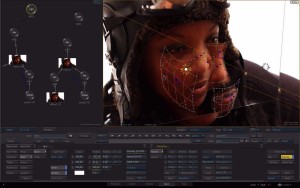
Autodesk introduced the new capabilities of its Flame Premium 2014 software at the International Broadcasting Convention 2013 (IBC) this weekend. Expected to ship later this fall, the latest release of Flame Premium combines the creative capabilities of Autodesk Flame 2013 20th Anniversary Edition software, Autodesk Smoke Advanced software and Autodesk Lustre software in an intuitive new workflow that integrates visual effects and editorial finishing. Autodesk Flame Premium 2014 also features new 3D visual effects creation tools, a graphics processing unit (GPU) pipeline for improved interactivity and enhanced real-time color grading tools.
“Expectations of visual effects artists and editors are higher than ever, and there’s no room for production bottlenecks that can derail the creative process and delay project delivery,” said Chris Bradshaw, senior vice president, Autodesk Media & Entertainment. “Flame Premium 2014 software’s holistic workflow and powerful new creative capabilities allow customers to seamlessly shepherd the creative process for an entire project from start to finish.”
Flame Premium 2014’s new workflow was first introduced to Autodesk Subscription customers in the Flame Premium 2013 20th Anniversary edition. The workflow links the Flame desktop, effects and editorial timeline, Batch procedural compositing environment and Action 3D compositing to provide a more efficient method of working.
Based on input from the Flame community, the new release also includes several other feature enhancements to provide artists with greater creative control, including support for 3D warping in action, enhanced tracking to improve tracking accuracy on challenging elements, and Reactor 2.0, the 16-bit GPU-driven Batch pipeline. With Reactor 2.0, artists can preview effects in the timeline during playback and access more effects tools, including GMasks and a single layer Action, as well as directly convert timeline compositions to Batch trees, to help artists quickly and efficiently iterate projects. Real-time color grading with the new Lustre ShotReactor helps improve background rendering and offers faster image processing.





